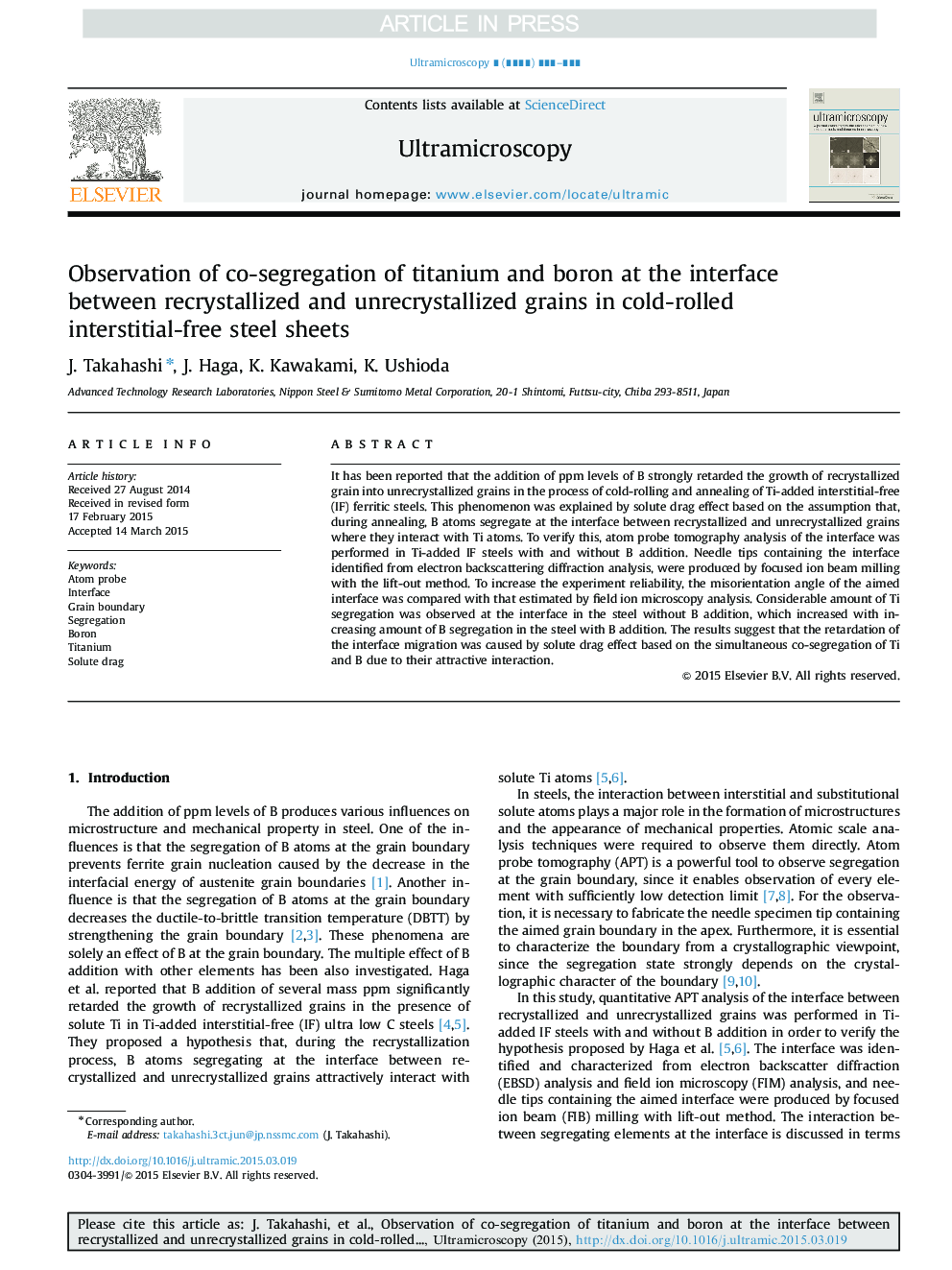| Article ID | Journal | Published Year | Pages | File Type |
|---|---|---|---|---|
| 10672460 | Ultramicroscopy | 2015 | 9 Pages |
Abstract
It has been reported that the addition of ppm levels of B strongly retarded the growth of recrystallized grain into unrecrystallized grains in the process of cold-rolling and annealing of Ti-added interstitial-free (IF) ferritic steels. This phenomenon was explained by solute drag effect based on the assumption that, during annealing, B atoms segregate at the interface between recrystallized and unrecrystallized grains where they interact with Ti atoms. To verify this, atom probe tomography analysis of the interface was performed in Ti-added IF steels with and without B addition. Needle tips containing the interface identified from electron backscattering diffraction analysis, were produced by focused ion beam milling with the lift-out method. To increase the experiment reliability, the misorientation angle of the aimed interface was compared with that estimated by field ion microscopy analysis. Considerable amount of Ti segregation was observed at the interface in the steel without B addition, which increased with increasing amount of B segregation in the steel with B addition. The results suggest that the retardation of the interface migration was caused by solute drag effect based on the simultaneous co-segregation of Ti and B due to their attractive interaction.
Related Topics
Physical Sciences and Engineering
Materials Science
Nanotechnology
Authors
J. Takahashi, J. Haga, K. Kawakami, K. Ushioda,
